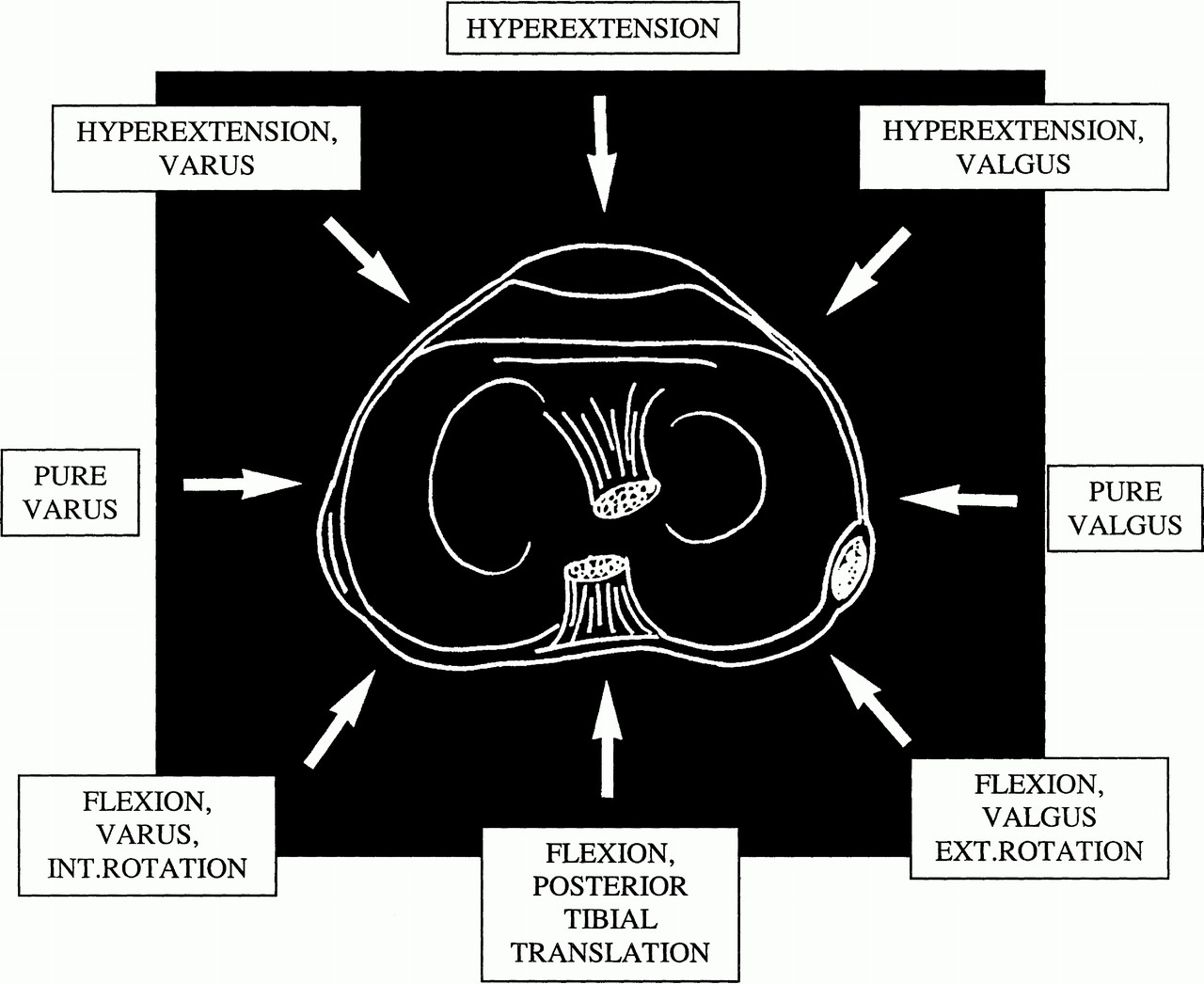
When the forces applied to collagen bundles exceed their ultimate tensile strength they will rupture. For a macroscopic ligament this may affect the whole substance of the structure causing a complete rupture (Grade III injury), or only those bundles that at under tension when the force is applied causing a partial rupture (Grade II injury). When the damage is at a microscopic level with little visible tearing we call this a sprain (Grade I injury).
The specific ligament damage depends upon the direction of the applied forces relative to the orientation of the knee joint.

The ability of knee ligaments to heal depends upon their environment. Collateral ligaments with good soft tissue coverage in a stable knee have a good prognosis with conservative treatment. The intra-synovial environment of the ACL, coupled with its tendency to stick back in the wrong place means normal stability is unlikely to spontaneously return.
Single vs. Multiple Ligament Injuries
At an anatomical level when one ligament has ruptured, this exposes the next restraining structure to the abnormal force which may fail in sequence. Multiligament injuries are therefore predictable and should not be over looked. The pattern of failure depends upon the direction of the applied forces.
© Mr Gavin Holt :: CotswoldClinics.com :: Print this frame